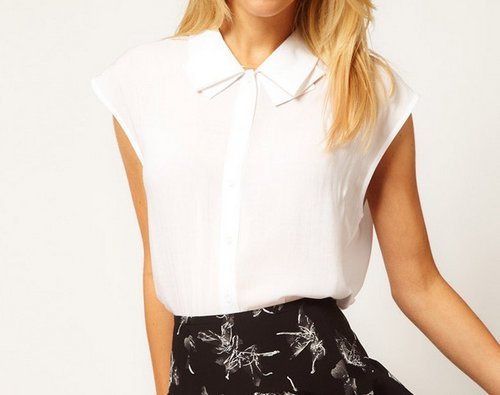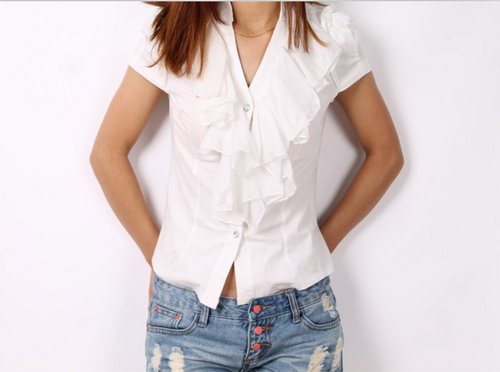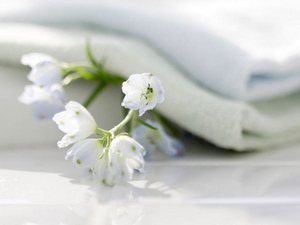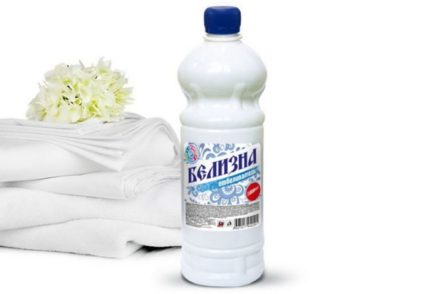A white blouse is an essential item in your wardrobe. And she will always look perfect if you know how to bleach a white blouse at home.

Our mothers and grandmothers had to use different means for this. And we have ready-made bleaches at our disposal. But you will have to understand their use, because there are different types, and they are intended for different situations. And it’s too early to discount folk remedies, especially today, when homemade recipes are cleaner from an environmental point of view.
Types of bleaches
All factory-produced bleaches can be divided into three types:
- products containing chlorine (these are the classic “Belizna”, “ACE”, “Chlorin” and others). This is the most aggressive chemical component that gives quick results. Such bleaches must be used with caution, since under the influence of the active component the fibers are gradually destroyed,
- oxygen bleaches (this category includes “Persol”, “Vanish” and other products that do not contain chlorine). The active component here is oxygen. These bleaches work in warm water and can be used on white blouses with colored inserts,
- optical brighteners. They do not remove stains from the fabric, but leave particles on it that visually make it lighter. These substances are called differently by manufacturers: “belophores”, “blancophores”, “heliophores”, but the essence is the same.
Features of bleaching different fabrics
Chlorine-containing bleaches are not suitable for thin silk or chiffon blouses. The fibers of such fabrics are quickly destroyed under its action. Optical brighteners are suitable for these materials, which, moreover, do not cause skin irritation and allergies, as happens with products containing chlorine.
Synthetic blouses can withstand any detergent, but they must be bleached in water at a temperature not exceeding 40 degrees. All types of cotton and linen fabrics tolerate chlorine bleaches, but you should not get carried away with such products. It is recommended to bleach such fabrics by boiling and wash them in hot water. Optical brighteners are suitable for all things.

How to whiten a blouse with home remedies?
A universal method is to use a 3% solution of hydrogen peroxide. This compound is suitable for both synthetics and various natural fabrics. For two liters of warm (but not hot) water, take hydrogen peroxide - about a teaspoon. Blouses made of synthetic fabrics are bleached in warm, but not hot water. Cotton can withstand hot water. So, the peroxide solution is mixed with water and a teaspoon of soda ash is added. This product allows you to get rid of yellowing on the fabric. The blouse is soaked in water for 20 minutes (if the water is hot, then only 10 minutes). To ensure that the restored color is uniform, the clothes are slightly turned in water.
Hydrogen peroxide is replaced with hydroperite - these tablets are sold at the pharmacy. Hydrogen peroxide is also combined with ammonia.In this case, you need to rinse longer than usual, and then ventilate the item for a long time, since the unpleasant smell of ammonia lasts a long time.
A proven remedy is potassium permanganate - just a few crystals are enough to color the solution pale pink and help get rid of impurities. But today this compound is not sold in pharmacies. Among folk recipes there is a remedy with boric acid, but it is rarely used.
Laundry soap has proven itself well (it is recommended to use 72%). Rub it either on a separate stain or on a completely gray blouse and leave for half an hour. After this, the product is either boiled or thoroughly rinsed. In general, the boiling method is mainly used for cotton products. Boil only in enamel containers. Remember to stir your clothes regularly. To do this, use smooth wooden tongs that will not damage the fabric.

How to whiten a white blouse with lace insert or embroidery?
A smart white blouse can be decorated with lace. If we are not talking about a synthetic material, but about thin handmade lace or ancient embroidery, then it requires careful handling. They wash such a blouse in a special mesh or a self-made bag for washing thin fabrics (it is made from linen or chintz).
To bleach blouses with lace, buy a special bleach for delicate fabrics. If you prefer folk remedies, use hydrogen peroxide, but only if it is cotton or silk lace (synthetic threads turn yellow from this substance). For one liter of hot water, take a teaspoon of hydrogen peroxide and soak the blouse in this solution for half an hour.After this, the product is thoroughly rinsed and dried in the usual way.
How to whiten a silk white blouse with home remedies?
A silk white blouse requires a special approach. This delicate material does not like aggressive washing and bleaching methods. It is recommended to wash silk products by hand, at a temperature of no more than 30 degrees, or in a washing machine on a delicate cycle. Blouses made from this material should not be rubbed too hard when bleached or twisted when spinning. After bleaching, they are rinsed in warm water and then again in cool water. Dry the product so that it is not exposed to direct sunlight, and it is advisable to lay the product on a towel.

If you don’t want to use ready-made bleach, try a proven recipe that requires sea salt - take 5-8 tablespoons of salt, preferably sea salt, for the required amount of water. Dissolve the salt in water and soak the blouse in this solution for two or three hours. If desired, you can add a little hydrogen peroxide to the solution. Saline solution is also suitable for synthetic clothing, but for silk it is the main option.
Thick silk fabrics are bleached in a solution of laundry soap. To do this, they are boiled in a container with such liquid for 30-40 minutes. But this method is only suitable for dense fabrics. Another option is lemon juice, which will help refresh a silk blouse. Take two or three lemons and squeeze their juice into a bowl of water (1-1.5 liters of liquid are poured into it). The blouse is soaked in this container overnight and rinsed thoroughly in the morning. Lemon juice has a whitening effect and does not spoil the fibers of natural fabric.
Basic Rules
There are several ways to whiten a blouse. But in any case, only pre-washed items are bleached. If you follow the manufacturer's instructions, wash your blouses at the temperature indicated on the label, and use a quality laundry detergent, bleaching may not be necessary. If, after all, the fabric has lost its whiteness or acquired a yellowish or grayish tint, use bleach or a proven folk recipe. Be sure to wear gloves! There is no point in experimenting with chemicals or inventing your own methods. If you are not sure that you can handle the task yourself, take the item to the dry cleaner.









